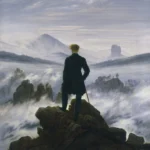From the questionable origin to their marginalization in Europe, Gypsies have never had the chance to tell their own story. However, there are some traces of their life represented by artists who have observed them closely. One of the artists is Jacques Callot (1592-1635) who showed through his engravings the banal life of the Gypsies in the 17th century. He painted the collection Les Bohémiens (1621/35) during the 30-year war in which there are 4 paintings that represent their life in France.
The history of the Gypsies in France (from 1419 to 1648)
Originally from India, the identity of the Gypsies was confused with the Egyptians. They migrated to Europe in the 5th century and arrived in France in 1419. They were called “zigeuners” by the French. Considered dangerous and violent, they were banned by Louis XII in 1504, their gathering of more than 4 people was considered illegal and in 1647 (towards the end of the 30-year war) being a gypsy was a crime.
Les Bohémiens (1621/35)
- Gypsies on the march I

The first painting of Callot’s collection Les Bohémiens shows a scene of migration. Many people are moving to an unknown destination. They look tired, but their search for shelter is what keeps them moving. They carry all their belongings with them on carts and on their backs. Their clothes are torn and many of them look sad and desperate. The horses that carry the weight of all their possessions too seem exhausted. Maybe because their journey was long and difficult. They have weapons with them which has been a subject of debate.
One of the interpretations of these people in this painting is that they are German mercenary soldiers who destroyed Lorraine during the 30-year war as the early 17th century, the gypies were not allowed to carry weapons. However, their attire and possessions show that they are wanderers looking for a new home. They carry weapons because from the 15th century they served as mercenary soldiers for national governments to have an occupation. For this trip, they were accompanied by their wives and children.
Focusing on their faces, they are all unhappy, the children are not in a hurry for the trip. There is a pregnant woman walking with her two children, hopeless, sad and tired. The image is cluttered which causes an overwhelming feeling of confusion and sadness in the viewer. This perfectly indicates the instability of the Gypsies.
2. Gypsies on the march II

This painting shows a few people. Because it’s a continuation of the crowd of migrants. We can see small blurred engravings that show the groups in which the Gypsies move. There are animals that accompany them such as dogs and chickens. Their groups are so large, which may be an indication that because of the war they are forced to migrate entirely despite the fact that their gathering of more than 3 or 4 people was considered illegal.
What is striking about these paintings is the feathered hats that some of them wear which was perhaps a part of their identity. This part of the group carries fewer weapons than the previous one, which may indicate that the first group is walking in front to protect those who walk behind them. In these two images, Callot paints struggle, hard work & despair.
3. At a Resting Place

Jacques Callot closely observed the actions of the Gypsies. In the third painting of his collection, he paints the relief of these people as they find shelter. Some are gathered in groups, talking, while others take down their possessions from the horses. There is a crowd of living people ready to settle in the place for the moment.
We can see children chasing birds with tools in the background. Everyone is busy because their faces seem comfortable. Seeing this image gives a sense of community unity where they strongly depend on each other to survive. This seems to be the first scene to settle where the group has just arrived and spends time gathering and preparing for their stay.
4. Gypsies Camping

In the last image of his collection, Callot shows a scene from the daily life of gypsies. This image is the densest that represents the contribution of each individual to the work. From a child to a parent, each person seems to focus on something in this painting. There is a group of people preparing food, some hang corpses of recently hunted animals while others cook.
The pregnant woman who walked in the first painting gives birth in the last. There are women around her. A child holds a bird statue above her head because it is considered a symbol of good luck during childbirth in their tradition. Some people make beds between tree branches while others climb them and sit in deep thought. This whole image, although chaotic, is a representation of how a society works together and the importance that each person has in it.
Conclusion
During the war period, Jacques Callot discovered the depths of the feeling of instability, wandering, fatigue, despair and uncertainty through the representation of the life of the Gypsies. Observing the life of someone who is mistaken to be dangerous for society during times when there is uncertainty everywhere and telling their story through an honest representation is an act of respect and acceptance that Callot expresses towards them through his work.




